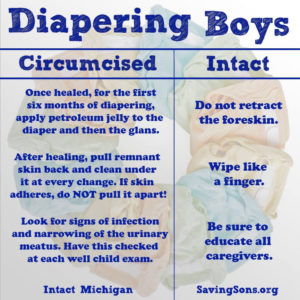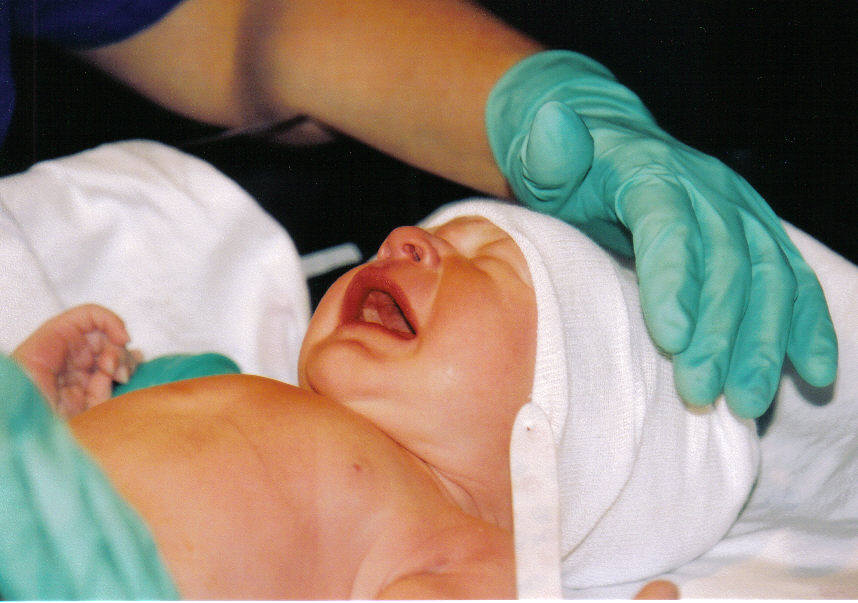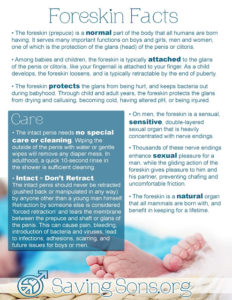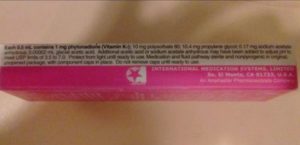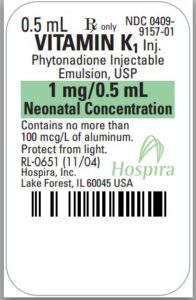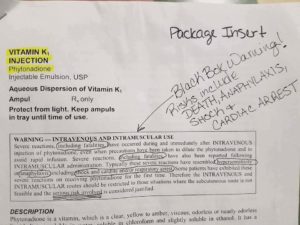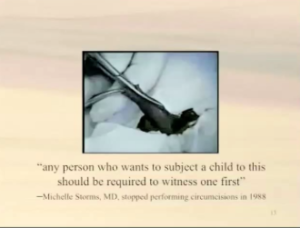 Botched circumcisions are a reality. Circumcision, which should more appropriately be referred to as ‘complete foreskin amputation’, as performed in the US on infants, often goes wrong. You might not have heard about it. Parents don’t talk about it. Boys and men experience so much trauma and pain that they rarely discuss it. Yet it is a reality that has negatively impacted the lives of thousands. Circumcision is a risk. It is a risk to lifelong sexual satisfaction; a risk of functional use of a healthy specifically designed part of the body. And there is a risk of death – far more often than parents are told about.
Botched circumcisions are a reality. Circumcision, which should more appropriately be referred to as ‘complete foreskin amputation’, as performed in the US on infants, often goes wrong. You might not have heard about it. Parents don’t talk about it. Boys and men experience so much trauma and pain that they rarely discuss it. Yet it is a reality that has negatively impacted the lives of thousands. Circumcision is a risk. It is a risk to lifelong sexual satisfaction; a risk of functional use of a healthy specifically designed part of the body. And there is a risk of death – far more often than parents are told about.
“The hundreds of boys I have seen who needed surgery to repair problems caused by their circumcisions are real. The men who lost more parts of their penis than the foreskin are real. The thousands of adult men saying they wish they hadn’t been cut are real. Not recognizing that circumcision is harmful is either ignorance or denial.” Adrienne Carmack, M.C., urologist https://www.doctorsopposingcircumcision.org/for-professionals/complications/#anchor-02
Please inform yourself of exactly what the procedure entails BEFORE you are in the hospital faced with the question of whether to keep your son intact or not. This is elective surgery. It is a choice for parents to make, yet often parents are not fully informed.
I urge you to dedicate at least 2 – 4 hours researching circumcision before you make an irreversible decision for your son’s genitalia. If you still decide to do the surgery, at least you will make an informed decision that you won’t later go back to and say, “I wish I knew better before I had made this permanent decision for my son about his genitals.”
The most important thing for you to do right now is to decide why you might want to have this surgery done to your newborn son.
The most common reason given for circumcision is because they want their son to look like everyone else, so they won’t be teased or embarrassed. The truth is ALL penises look different – whether intact or cut. Over 80% of adult men in the world have intact genitalia. Many experts in the US now admit that there is no need for circumcision and recognize it as purely cosmetic surgery. Because of that, insurance doesn’t always pay for it, and many parents are now skipping the procedure. As a result, fewer and fewer infants in the US are having this cosmetic surgery so the locker room issue will not arise. In 2010, the CDC reported that 41.70% of baby boys left US hospitals intact! Would you endorse cosmetic surgery on your young daughters genitals or breasts to conform to other girls? Could we give our sons the same consideration?
Some moms want to circumcise their newborns because they don’t like the way an uncircumcised man looks. Maybe their son’s future wife won’t have that same opinion. Intact men are satisfied with their genitals. When asked, most intact men say they would rather face teasing than have their forsaken amputated. Adult men will have the opportunity of having a circumcision – with true informed consent – if they desire.
Other people opt to circumcise because of the religious connection. In the book of Genesis, Abraham was told to circumcise all the males in his household. When Jesus was eight days old, his parents took him to be circumcised. This procedure, given to the Jewish nation before running water, was symbolic in nature and had no value except to mark someone as a Hebrew person that placed their faith in God. Biblical circumcision was a cut. A small blood sacrifice; a mark on the skin. It was not a complete amputation of the foreskin. Only a very small bit of the excess foreskin was removed. It never involved forcibly tearing the protective skin away from the glans (head) of the penis, which is adhered at birth like a fingernail is to a finger. Additionally, there are many New Testament examples that clearly show us the need for a blood sacrifice has been finally fulfilled in Jesus’ death and circumcision is no longer necessary. See Galatians 5 & 6 or look up circumcision in a concordance.
Here are a few links that I urge you to look at BEFORE making any kind of irreversible decision for your precious son.
There is a lot of discussion on whether a baby can feel the pain of this traumatic surgical procedure, or if that pain makes a difference in his life. Anesthesia … http://www.drmomma.org/2008/11/the-effectiveness-of-anesthesia-for.html?m=1
Why did circumcision became so mainstream in the US? These excerpts from medical journals from the late 1800’s and the 1900’s provide the answers. http://www.drmomma.org/2007/05/circumcision-brief-history-in.html?m=1
This EXCELLENT video, Child Circumcision: An Elephant in the Hospital, looks at the topic through both a review of scientific literature and a discussion of the human cost of the procedure, this presentation explores these questions from the perspectives of the child, the adult survivor, the parent, and the practitioner. Ryan McAllister, PhD, is a parent, a biophysicist, an Assistant Professor of Physics and Oncology at Georgetown University, and also a volunteer who supports parents and families. Over the last 10 years he has been studying the medicalization of childbirth in U.S. hospitals.
The actual procedure: An infant’s penis is very small making such surgery difficult and delicate. There is a very small surgical field and no way to know how the penis would normally grow, which can and does result in devastating outcomes. In fact, some men have painful, tight erections because too much foreskin is removed in infancy. Any parent considering allowing such a surgical procedure on their son should at the very least, watch a video that shows what happens during the procedure. This video is a US style circumcision using a plastibell device. [Edit: the original linked video vanished so I found another one. It is age restricted so you will have to click on it to watch on YT.]
From a nurse…
…the first circumcision I saw was in nursing school. I asked the doc if he would use something for pain. He said, “No, topical meds won’t be enough before hand and if I give him injections I’ll have to give 9-12 injections, which will make the pain worse at first. No, it’s better to just do it quickly. Get it finished. Apply topical pain relief and give him to his mom to nurse or feed.”
The nurse took the baby back to mom after he had stopped crying. She told mom, “He did great…” and mom smiled. She never knew what the experience was like for her son. It was heartbreaking. I asked the nurse how she felt about it and told her I felt sick. I was shaking. She said, “Yeah it’s one of the worse parts of the job…” and that was it. She walked off. Later she told me she wished it didn’t happen and her own son was intact. I said, “Well, yeah, because you’ve seen it happen – how awful it is. These parents, here, never see behind the scenes.”
Alicia J.
I hope these resources help you get started in learning about the details of making this important decision for your precious son. This is my second blog on this topic, you can read my first blog here.
Edit: I just found 2 more thorough sources of information published by GreenMedInfo on this topic:
Ji, Sayer. “Infants Deeply Traumatized By Common Medical Procedures, New Study Suggests.” GreenMedInfo – The World’s Natural Health Resource, 30 July 2016, www.greenmedinfo.com/blog/infants-deeply-traumatized-medical-procedures-new-study-suggests-1.
Quine, Spoony. “The Foreskin: Why Is It Such A Secret In North America?” GreenMedInfo – The World’s Natural Health Resource, 2 July 2015, www.greenmedinfo.com/blog/foreskin-why-it-such-secret-north-america.
 Author: Becky Hastings, wife, mother, grandmother, passionate follower of Jesus and truth. As a breastfeeding counselor for over 23 years Becky is devoted to helping parents make wise decisions for the long-term health and wellbeing of their babies.
Author: Becky Hastings, wife, mother, grandmother, passionate follower of Jesus and truth. As a breastfeeding counselor for over 23 years Becky is devoted to helping parents make wise decisions for the long-term health and wellbeing of their babies.



